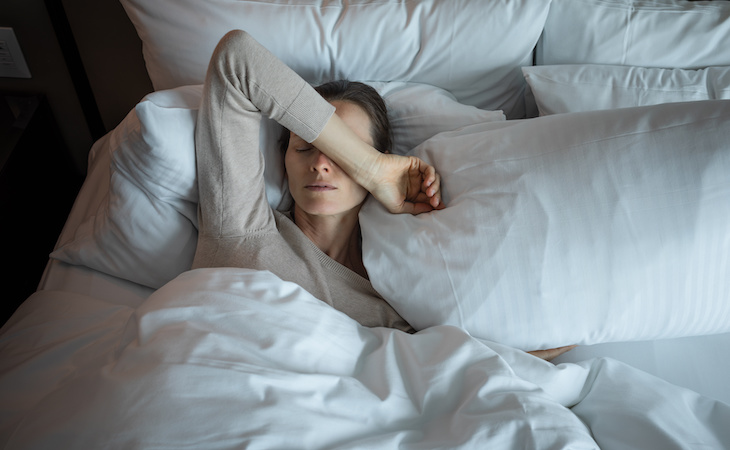We all get lost in our thoughts sometimes. And we all know what it’s like to find ourselves wandering the hills and valleys in our mind when we indulge in daydreaming. These are natural, even normal, moments of briefly checking out of reality.
But what if your daydreams are so intense and so preoccupying that they interfere with your job or your relationships? What if your daydreams are more like trance states in which you’re a character in a story that may continue the next time you enter that state? And what if they’re so frequent and vivid that they take a toll on your sleep?
These things are all symptoms of what’s called maladaptive daydreaming, also known as daydreaming disorder. This article will explain what maladaptive daydreaming is, why medical and mental health experts believe it happens, and how to treat it.
What is maladaptive daydreaming?
“When we are talking about maladaptive daydreaming, we are talking about people that are having very vivid and complex daydreams,” says Samia Estrada, PsyD, Fairfield, Calif.-based clinical psychologist with Dignus Psychological Services.
These daydreams tend to be more fantastical in nature. “For example, they could be daydreaming in cartoon characters, movies, or soap operas,” says Estrada. “The person can also respond physically and verbally to their daydream. This can range from whispers to loud voices and movements such as swaying back and forth, twirling, and pacing.”
Estrada explains that people most likely to experience maladaptive daydreaming typically have other mental health conditions, such as anxiety, depression, obsessive-compulsive disorder (OCD), ADHD inattentive type, Asperger’s Syndrome, “and especially being a survivor of childhood trauma.”
She says mental health and medical providers believe a person uses maladaptive daydreaming “to escape their everyday life which can be filled with loneliness, strife, abuse, and traumatic memories and triggers.”
Another trait or capacity those with maladaptive daydreams tend to have is what Estrada calls “immersive daydreaming,” meaning “they are able to be fully absorbed in fantasy.”
Often this is a trait that can be traced back to their childhood. Estrada emphasizes that this can be a positive trait to have as a child—and while it doesn’t in itself lead to maladaptive daydreaming, “it does facilitate the immersion in the daydreams for people who have this condition.”
What are the symptoms of maladaptive daydreaming?
Common symptoms of maladaptive daydreaming include:
- Intense, structured daydreams that include a story with characters, settings, and plotlines
- Daydreams triggered by real-world events or sensory stimuli
- Unconscious facial expressions, repetitive bodily movements, talking or whispering that accompany the daydream
- A strong addiction-like desire to keep the daydream going
- Daydreams that can last for several hours
- Trouble focusing on daily tasks due to the daydreams
- Difficulty sleeping at night
- Awareness that the daydream fantasy world is different from external reality
Why does maladaptive daydreaming happen?
“Even expert researchers are unclear on the origins of maladaptive daydreaming, except for the observation that it functions as a coping mechanism for anxiety, depression, and other distress,” says Sal Raichbach, PsyD, a licensed clinical social worker in Lake Park, Fla.
Can maladaptive daydreaming lead to other conditions?
Although maladaptive daydreaming isn’t known to lead to other conditions, other conditions are often seen together with maladaptive daydreaming. Sleep disorders are also what Estrada calls “a sidekick to this condition.”
“Although maladaptive daydreaming is not considered a psychiatric disorder, it can be a symptom of a recognized mental illness such as obsessive-compulsive disorder, attention deficit disorder, insomnia disorder, or schizoid personality disorder,” says John F. Tholen, PhD, a Calif.-based cognitive psychologist and author of Focused Positivity: The Path to Success and Peace of Mind.
Because it involves an intentional choice “to attend to internal rather than external stimuli,” Tholen says some consider maladaptive daydreaming “a form of addictive disorder.”
He notes, though, that gambling disorder is the only addiction to something other than a substance that is currently classified as a mental disorder.
Maladaptive daydreams can get in the way of people’s everyday lives by happening at times when they could be working, spending time with loved ones, or completing other tasks of everyday life.
“However,” says Estrada, “the longer they are in the daydream, the longer they spend not being present in their real lives and relationships.” This can take a serious toll.
How is maladaptive daydreaming treated?
Estrada says the best treatment plans are co-created by the mental health care provider and the person experiencing maladaptive daydreaming.
The treatment can consist of “retraining the brain” by rewarding the desired behavior—controlled and timed daydreaming used as a reward after the person has completed the tasks or activities they need to complete.
“Simply monitoring the condition can be extremely helpful in providing information about their internal activity and help to reduce daydreaming time,” she says.
Cognitive behavioral therapy (CBT) is also used to identify maladaptive thoughts and behaviors and make the necessary changes. Mindfulness practices are used to better control internal experiences.
“And,” Estrada says, “treatment of comorbid or cooccurring conditions such as depression, anxiety, and sleep disorders help individuals to lessen their debilitating symptoms.”
FAQs
Is maladaptive daydreaming a mental illness?
Maladaptive daydreaming is still considered a fairly recently described condition. It’s not yet listed as a mental illness in the Diagnostic and Statistical Manual of Mental Disorders, the definitive encyclopedia of mental and psychiatric illnesses.
Although it isn’t classified as a mental illness itself, people have reported that their experience of maladaptive daydreaming happens alongside well-known mental illnesses—including depression, anxiety, PTSD, OCD, ADHD, bipolar disorder, borderline personality disorder, dissociative disorder, and psychosis.
Is maladaptive daydreaming a form of ADHD?
Although they’re not the same thing, experts have found connections between maladaptive daydreaming and ADHD.
A 2017 study examining 39 people with maladaptive daydreaming found that almost 77% of the participants also had ADHD. Sleep disturbances are also common in ADHD and maladaptive daydreaming.
Is maladaptive daydreaming serious?
“As with most mental health conditions, untreated maladaptive daydreaming can become more detrimental and even debilitating,” says Estrada. “It has the capability of causing chaos in the person’s personal life and contribute to other cooccurring conditions.”
Her best advice is to check with a knowledgeable and experienced mental health care provider if you think you may be having maladaptive daydreams.
Mental health conditions like anxiety and depression can also lead to nightmares. Learn more about what causes nightmares and how to prevent them from happening.




